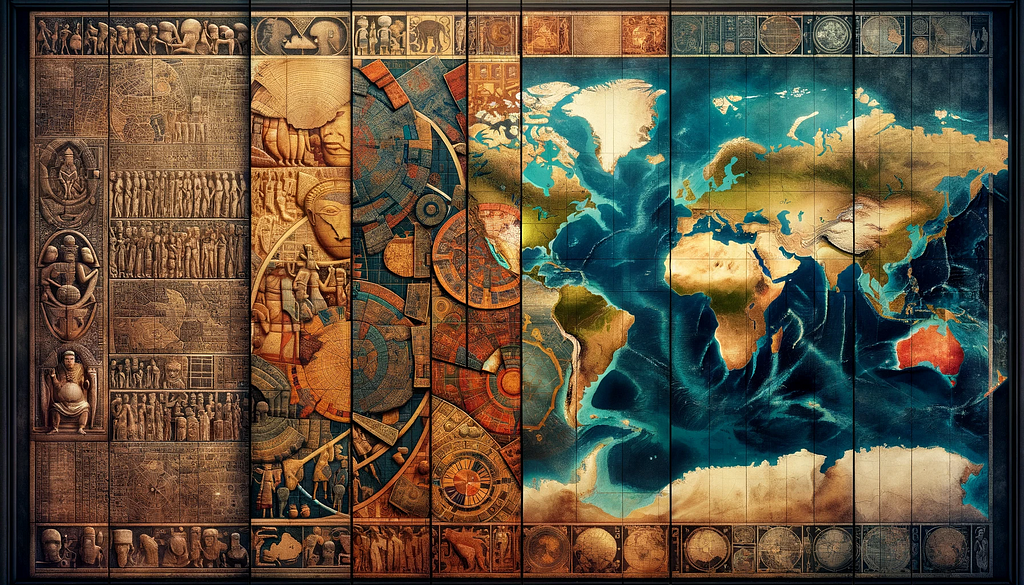
The art and science of map-making, known as cartography, have a rich and complex history that spans thousands of years. The evolution of world maps reflects not only advancements in technology and knowledge but also the changing ways in which humans have perceived, conceptualized, and interacted with their world. From the mystic and symbolic representations of ancient times to the precision-oriented digital maps of today, each era’s maps tell a story about the people who made them and the times in which they lived.
Ancient Beginnings
The Babylonian World Map
One of the earliest known world maps is the Babylonian World Map, dating back to the 6th century BCE. This map, inscribed on a clay tablet, presents a simplistic and mythological view of the world, with the Euphrates River at its center, surrounded by a circular landmass and beyond that, a ring of water called the “Bitter River”. This map is more symbolic than geographical, representing the Babylonians’ world view rather than a literal depiction of their world.
Greek and Roman Contributions
The Greeks and Romans made significant contributions to cartography. Anaximander, a Greek philosopher of the 6th century BCE, is credited with creating one of the first maps of the known world, which included the three known continents: Europe, Asia, and Libya (Africa). Later, Ptolemy, a Greco-Roman scholar of the 2nd century CE, revolutionized map-making with his work ‘Geographia’. He introduced the concepts of latitude and longitude, providing a framework for more accurate and systematic map creation.
The Medieval Mappa Mundi
Symbolic Christian Worldviews
Medieval maps, known as Mappa Mundi, were less about geographical accuracy and more about illustrating a worldview consistent with Christian theology. A famous example is the Hereford Mappa Mundi from the late 13th century. This map places Jerusalem at the center of the world and is filled with religious allegories and biblical events rather than precise geographic details.
Age of Discovery: A Shift to Accuracy
The Renaissance and Cartographic Advances
The Age of Discovery marked a significant shift in map-making. Explorers like Christopher Columbus and Vasco da Gama expanded the known world, and with these explorations, maps became more detailed and accurate. The Cantino Planisphere (1502) and the Waldseemüller Map (1507) are notable examples from this era, showing the world’s continents in a form more recognizable to us today.
Modern Cartography
From Paper to Digital
The 20th century brought about the most significant changes in cartography. Aerial photography, satellite imagery, and Geographic Information Systems (GIS) transformed maps from static paper documents into dynamic digital representations of the world. Modern maps are not only used for navigation but also for a wide range of purposes from urban planning to disaster management.
The journey of world maps from ancient clay tablets to interactive digital displays is a testament to human curiosity, innovation, and the desire to understand and navigate our world. Each map, whether a symbolic representation of medieval theology or a detailed digital image from a satellite, offers a unique glimpse into the minds and lives of the people who created it. As technology continues to evolve, so too will the ways in which we map and perceive the world around us, proving that maps are much more than mere tools for navigation — they are mirrors reflecting our evolving understanding of the world.
This article offers a concise overview of the evolution of world maps, highlighting key developments and changes in approach and technology over the centuries.
The Evolution of World Maps: From Ancient to Modern Time was originally published in SapiensStorytime on Medium, where people are continuing the conversation by highlighting and responding to this story.